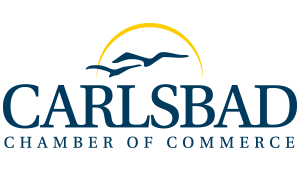Hire now or hire later
A lot of companies view hiring additional staff as a sort of chicken and egg scenario. Recent surveys on employee satisfaction have shown there's no shortage of work to be done. Still, employers are hesitant to bring on staff because revenue has not stabilized at strong levels.
So, do you bring on those needed employees to help drive revenue, or do you wait for more revenue to come in before you support additional staff?
Of course, there's no answer that's right for every business. Sometimes a leap is required and additional staff can release the pressure valve for existing employees, increasing loyalty and retention. Sometimes there's simply too much instability to undertake any kind of move. And sometimes it can make the most sense to bring in contingent staff to move things forward without making a permanent investment.
In many companies, the contingent labor force has grown to double digit percentages. The contingent workforce is typically a highly motivated group because their ultimate goal is to be offered and maintain permanent employment. Still, there is an “S curve” to get them to desired levels of productivity, customer service and even innovation.
Viewing contingent employees as more than just a “stopgap” ensures that their value is maximized. Bolster the support provided to contingent employees to maximize their contributions to your organization's success.
• Educate your permanent workforce to foster better integration of contingent employees. Be sure managers understand the importance of engaging contingent staff by clearly explaining the role of the contingent workers and how it contributes to the organization's goals.
• As much as possible, remove the unnecessary barriers that keep contingent workers from feeling part of the team. Share critical communications important for them to do their job or to feel part of the team.
• Provide contingent staff the tools needed to succeed and share honest feedback with them on their performance. Most committed workers want to improve and be seen as a valued member of the team.
• Promote career development. Even though they are not permanent employees, an ongoing program to improve the skills?and thus the value?of contingent workers will ultimately help the organization meet its business objectives.
In the absence of a crystal ball, it's still important to make a decision and talk with employees about the “what” and “why” of that hiring decision. If employees feel they've been left to blow in the wind, you can bet disengagement and decreases in production will follow. This way, whether you're holding the chicken or the egg, at least you're moving forward with a plan in hand.
Julia Mira can be reached at
[email protected].
A lot of companies view hiring additional staff as a sort of chicken and egg scenario. Recent surveys on employee satisfaction have shown there's no shortage of work to be done. Still, employers are hesitant to bring on staff because revenue has not stabilized at strong levels.
So, do you bring on those needed employees to help drive revenue, or do you wait for more revenue to come in before you support additional staff?
Of course, there's no answer that's right for every business. Sometimes a leap is required and additional staff can release the pressure valve for existing employees, increasing loyalty and retention. Sometimes there's simply too much instability to undertake any kind of move. And sometimes it can make the most sense to bring in contingent staff to move things forward without making a permanent investment.
In many companies, the contingent labor force has grown to double digit percentages. The contingent workforce is typically a highly motivated group because their ultimate goal is to be offered and maintain permanent employment. Still, there is an “S curve” to get them to desired levels of productivity, customer service and even innovation.
Viewing contingent employees as more than just a “stopgap” ensures that their value is maximized. Bolster the support provided to contingent employees to maximize their contributions to your organization's success.
• Educate your permanent workforce to foster better integration of contingent employees. Be sure managers understand the importance of engaging contingent staff by clearly explaining the role of the contingent workers and how it contributes to the organization's goals.
• As much as possible, remove the unnecessary barriers that keep contingent workers from feeling part of the team. Share critical communications important for them to do their job or to feel part of the team.
• Provide contingent staff the tools needed to succeed and share honest feedback with them on their performance. Most committed workers want to improve and be seen as a valued member of the team.
• Promote career development. Even though they are not permanent employees, an ongoing program to improve the skills?and thus the value?of contingent workers will ultimately help the organization meet its business objectives.
In the absence of a crystal ball, it's still important to make a decision and talk with employees about the “what” and “why” of that hiring decision. If employees feel they've been left to blow in the wind, you can bet disengagement and decreases in production will follow. This way, whether you're holding the chicken or the egg, at least you're moving forward with a plan in hand.
Julia Mira can be reached at
[email protected].
